Thousands of American Robins flocking during migration isn’t usually a cause for concern—until they start raiding your property. To stop them from becoming a bigger nuisance than they already are, this article has everything you need!
Here are strategies of how to get rid of robins: apply bird repellents, install predator decoys, use sonic bird repellers, put up wind chimes, seal possible entry points and nesting areas, cover plants with netting, remove nests, and eliminate food sources.
Read further for more relevant information about robins, how to properly identify them, how to promptly get rid of them, and prevent them from ever coming back!
What Is a Robin?
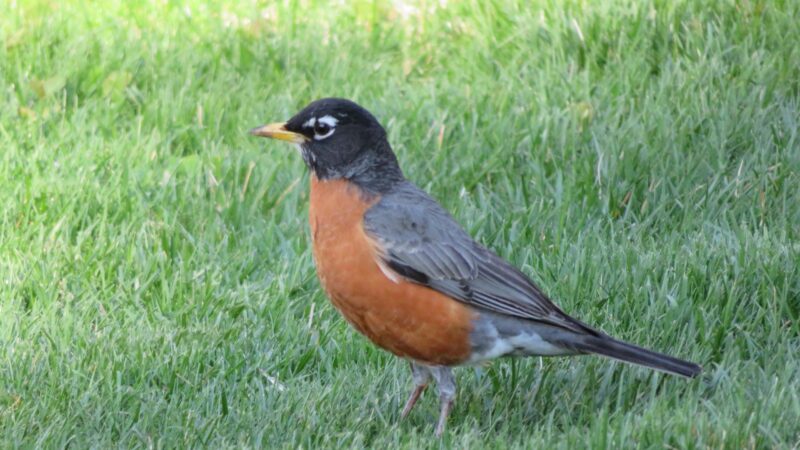
A classic early bird and a member of the thrush family, American Robins are often heard than seen due to their cheerful songs and musical whistles. They are usually the first telltale signs that spring has come.
- Scientific Name: Turdus migratorius
- Lifespan: Up to 14 years (in the wild); Up to 17 years (in captivity)
- Habitat: Woodlands, fields, gardens, lawns, and orchards. They are also common in agricultural areas and suburban communities.
- Length: 23 to 28 centimeters
- Weight: 77 to 85 grams
- Wingspan: 31 to 40 centimeters
- Diet: Fruits, insects, earthworms, and other invertebrates
- Place of Origin: North America, Canada
- Characteristics: Social birds as they congregate in large flocks. Nearly all birds are migratory. They are also territorial during the summer and mostly active during daytime.
How to Identify Robins?
It is important to distinguish American robins from other birds of the same family or of similar appearance.
American robins are medium-sized, round-bellied songbirds with dark gray or black heads, brown backs, reddish or warm orange breasts, inconspicuous white patches on the lower tail feathers, and white throats that are black-streaked.
Females and juveniles are slightly duller in plumage compared to males. But the latter are more darkly spotted on their chests.
Signs & Causes of Robins Nesting Near Your Home
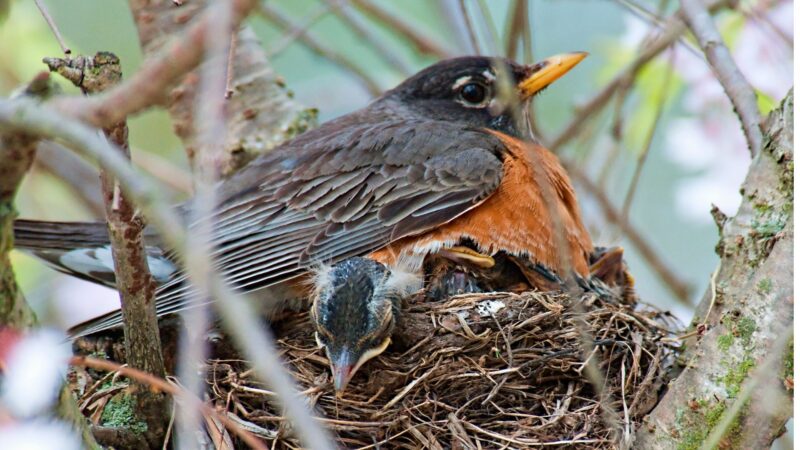
Robins are frequent visitors of homes and properties. They are accustomed to living with humans, going so far as to nest in locations such as roofs, eaves, trees, ledges, and other suitable spots.
Here are some unmistakable signs that American robins are near your property or home:
- Presence of birds or bird activity: Be on the lookout for bird poop, nesting materials, and feathers around the vicinity.
- Locating nests: Monitor the property for any bird nests made with a combination of mud, grass, and twigs.
- Listen closely for their calls or songs: They are a succession of whistles produced at a steady rhythm. Robins also mumble a tuk, cuck, peek, yeep, or chirr.
8 Effective Ways to Rid of Robins
1. Apply Liquid Bird Repellent
Chemical repellents can be applied to places where the robins frequently perch. These products cause sensory irritation to the birds when they step on it. Don’t worry as these don’t contain any toxic compounds.
- Mitigates Birds Effectively: Bid farewell to birds roosting on...
- Versatile Bird Proof Gel: Whether it's windowsills, building...
- Maintains Property Aesthetics: Our clear gel cuts cleanup costs,...
- Reliable Bird-Resisting Gel: Crafted to discomfort birds without...
- Easy Application: Your ultimate ally in bird control, our gel is...
2. Install a Fake Predator
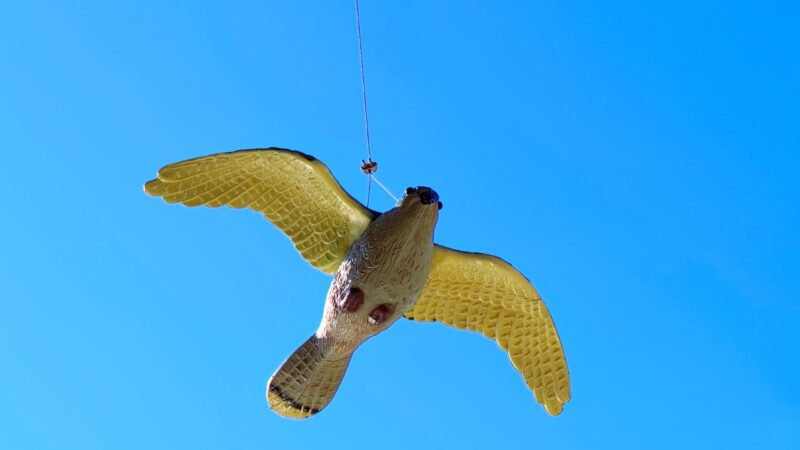
Strategically place predator decoys around the property. It can be figurines that resemble owls, hawks, coyotes, or snakes. Relocate them every now and then so that the birds don’t get acclimated to their presence.
3. Use a Sonic Repeller
Sonic repellers that produce bird distress calls, predator sounds, or high-frequency noises can discourage robins from entering your property. This will also prompt them to try their luck somewhere else.
Make sure to choose a product with an extensive range to deter any birds even from far distances.
- 【Healing Sounds From Nature】: Bring the sounds of birds and...
- 【9 Soothing Natural Sounds】: Bird Chirping Box comes with...
- 【Volume Adjustment & Timer】: Bird Chirping Box creates a...
- 【Easy to Use】: Load 3x AAA batteries (not included), turn on...
- 【Perfect Gift】: Bird Chirping Box will relieve you from...
- Authentic Bird Calls: Immerse yourself in high-fidelity bird...
- Seamless Motion-Responsive Design: This bird sound speakers smart...
- Bioacoustic Relaxation Device: The Bird Singing Speaker delivers...
- Widely Used: Optimize environments effortlessly with this bird...
- Fast Setup: Transform any room effortlessly with this bird...
- ✔Motion-activated sensor that triggers the delightful bird...
- ✔Bird sounds gradually fade away after 120 seconds
- ✔Charming and compact design with a natural wood effect,...
- ✔Portable and versatile, suitable for any space, including...
- ✔Adjustable volume for a subtle background ambiance and...
Related: How to Get Rid of Grackles | Proven Tricks to Repel Them
4. Put up Wind Chimes
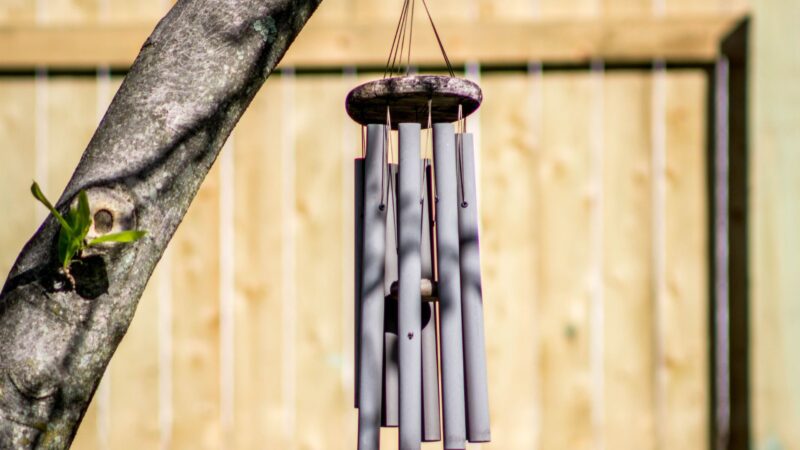
Wind chime sounds are an unpleasant experience for American robins. However, this will only work for the first few times they visit your yard. Thus, wind chimes should be used together with other deterrents.
Related: Best Woodpecker Deterrents | Must-Read Before You Choose
5. Put Screens Around Structures and Openings
Seal any possible entry points and nesting areas for the robins. Select a product based on what you’re trying to close (e.g. vents, crevices). This includes wire mesh, nylon, or screens.
6. Cover Your Gardens With Netting
Cover desirable plants, especially those frequented by insects, with wire mesh netting propped up by a PVC frame.
7. Get Rid of Existing Nests
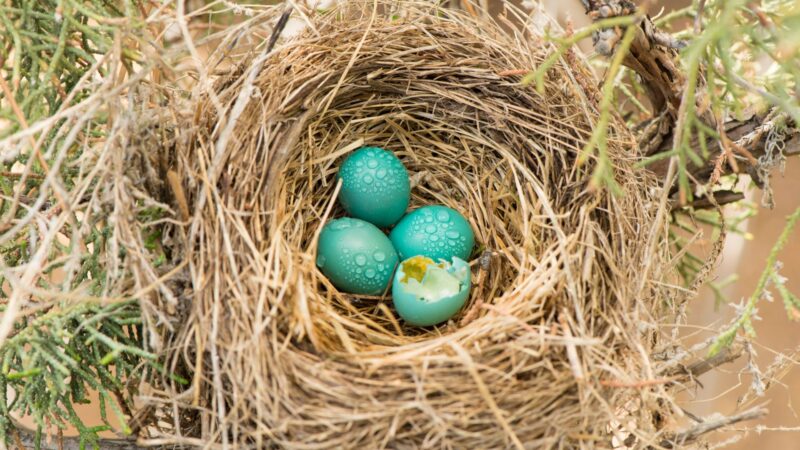
Robin nests can be removed only after the nesting season when the nest is completely abandoned.
When removing nests, make sure to wear protective clothing and gloves as they may contain mites which can cause irritation. To be sure, contact your local wildlife professional for help.
Related: How to Keep Birds From Nesting on Porch? | The Effective Guide
8. Get Rid of the Robins’ Food Source
Remove or cover food items that can attract robins. This includes fruit trees and other vegetation, pet food, bird seed, and open garbage bins or compost pits. If you can, eliminate insect populations.
How to Get Rid of Robins Nesting in a Tree Trunk?
Here are some tips you can follow to remove robins and prevent them from nesting in tree trunks:
- Install a predator decoy: As mentioned above, place fake predators near or on the tree trunk to scare the birds away and encourage them to relocate.
- Use bird spikes: Make sure they are properly fastened onto the tree trunk to keep them from falling.
- Use bird netting: Place the appropriate bird netting around the tree trunk to prevent birds from nesting on it.
Make sure that the robin nests are unoccupied before removing them and placing preventive measures.
Related: How to Prevent Birds Nesting in Roof? | Information and Control Guide
How To Keep Robins Away?
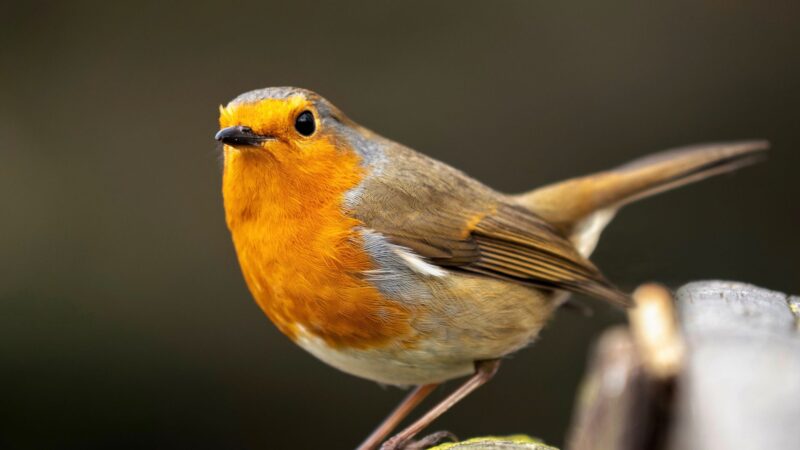
Robins might not get the message clearly so make sure to combine all the strategies and tips in this article as effective preventive measures.
Additionally, keep your property clean at all times. Conduct regular inspections around the vicinity for any nests or bird activity.
Related: How to Keep Birds Away From Your Car? | Control and Prevention
List of Sources
All About Birds. (n.d.). American Robin.
Dewey, T., & Middlebrook, C. (n.d.). Turdus migratorius: American robin.
Maryland Department of Natural Resources. (2020). Backyard Birding Tips.
National Audubon Society. (n.d.). American Robin.
Oregon State University. (n.d.). When I can move a robin’s nest?
- How to Get Rid of Copperheads | Practical Guide - August 27, 2023
- How to Get Rid of Corn Snakes | What Makes Them Aggressive? - August 27, 2023
- How to Get Rid of Alligators | Safety Measures and Removal Methods - July 16, 2023




